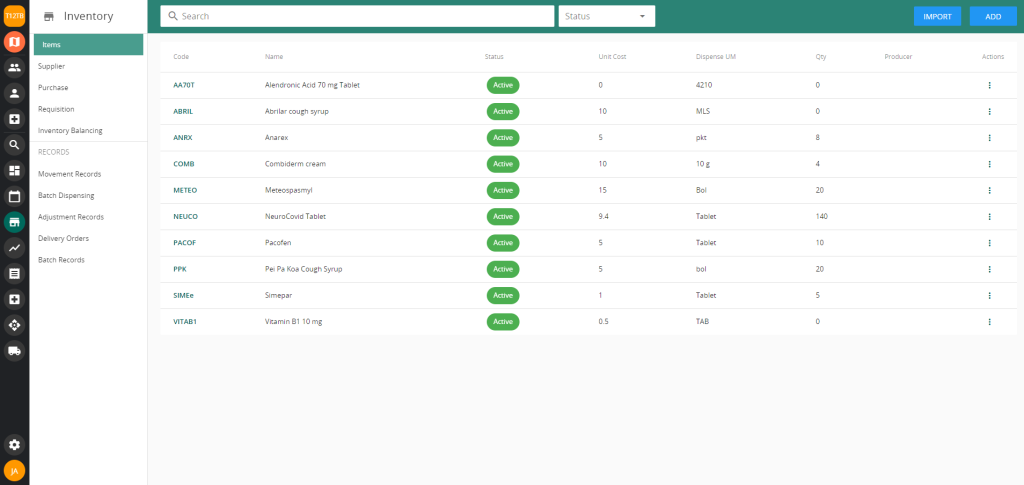Steps in Managing Medical Inventory
The main purpose in keeping track of Medical Inventory is to protect medicine from damage, loss, theft, or wastage and to ensure the availability of necessary medicine for saving patients’ lives in a hospital. Here are some steps to follow when managing medical inventory.
1. Decide what medical inventory to buy
Once you’ve gotten your office organized, make a list of everything you may already have on hand or will need to acquire to fully stock your medical office.
While your medical practice’s specialty will dictate much of your inventory list, there are many items that just about every medical practice needs to have on hand. These essentials include items such as blood pressure monitors, thermometers, cotton swabs, syringes, common medications, procedural trays, and materials for sanitizing workspaces.
2. Create your medical inventory list
As you decide what your medical practice needs to stock, create your own comprehensive medical supply checklist, or inventory list. You can do this in a few different ways: on a sheet of paper, with a medical inventory spreadsheet, or directly into an inventory app.
Regardless of what inventory management system you select, you’ll need to record all the essential details about every item in your inventory. This includes the item name, SKU, serial number, location, minimum quantity, cost, quantity in stock, and any other details that matter to you.
3. Set low stock alerts, warranty end, and expiry date reminders
If using a spreadsheet to track your medical inventory and equipment, you’ll need to find a system to keep track of important dates, too. You should set calendar reminders for reordering inventory, warranty ends, and expiration dates.
If that process sounds daunting, try medical inventory management software that can automate these reminders.
4. Keep your medical inventory list updated
If you choose to use a spreadsheet to manage your medical inventory, you’ll need to decide when your team will physically count your supplies, materials, and equipment. Some practices conduct physical inventory counts daily, while others conduct them weekly or even monthly.
If you are transferring inventory information from a printed out medical inventory list to a template, you’ll want to fill out your spreadsheet very carefully. That’s because many data entry errors occur during this process.
If you don’t want to physically count inventory over and over again, you can switch to a perpetual inventory system instead. Using an inventory app like Sortly, you can simply check items “in” and “out” as they move locations or are consumed. This way, your inventory is always accurate—–and you’ll likely conduct only end-of-year inventory counts to audit your inventory and assets.
Vanda's Inventory Module
Vanda CMS’s inventory module allows clinic staff to conduct overall management of drugs stocks, keep track of drug information, dispensed, quantities and statistics. There are two kinds of costing method available, AVG and First Expired First Out
A requisition module is also available to recommend clinic administrators/nurses with procurement quantity based on previous item usage average or user pre-defined stock quantities.

Lack of drugs, overdosing and illegal distributions of drugs are extremely serious matters. VandaClinic’s detailed Inventory system ensures that drugs are readily available for patients, drug movements are tracked and audit-able.
Reference: Sortly
